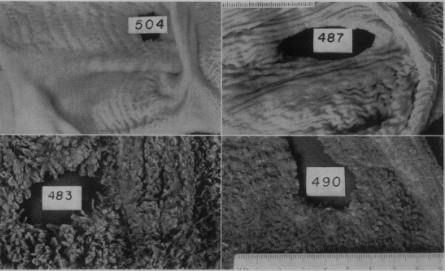By Jerad Jaborek
Cattle are ruminants, meaning their one stomach is comprised of four compartments: the rumen, reticulum, omasum, and abomasum. For mature cattle, the rumen makes up approximately 85% of the total capacity of the stomach complex, according to a Journal of Dairy Science article by Huber and others, and is the location where feed is fermented into usable energy components called volatile fatty acids.
Rumen development is largely measured by the development of the rumen papillae and rumen muscle mass. Rumen papillae are finger-like projections that protrude from the interior of the rumen wall to increase the surface area of the rumen for greater nutrient absorption. For the newborn calf, however, the rumen is underdeveloped and only accounts for approximately 35% of the total capacity of the stomach complex according to a Journal of Dairy Science article by Tamate and others. In newborn calves, the abomasum is the largest part of the stomach complex at 65%. Therefore, the rumen of a newborn calf must undergo significant developmental changes to store and digest feed in a manner similar to that of mature cattle.
When the calf suckles milk from the teat or bottle, the esophageal groove shuttles milk past the rumen and into the abomasum, where it will begin digestion. The abomasum and small intestine secrete enzymes that are designed to digest protein, fat, and carbohydrates that can be absorbed in the small intestine. In the absence of suckling, such as when the calf drinks water from a pail, water ends up in the rumen. Likewise, the consumption of dry feeds, such as grain and forage, end up in the rumen where they begin the digestion process.
The rumen becomes inoculated with microbes obtained from the birthing process and the surrounding environment. The consumption of dry feeds helps to inoculate the rumen with bacteria that will aid in the fermentation of the feedstuffs entering the rumen. Depending on the types of dry feeds consumed (i.e., grains vs. forage), the microbes best suited to digest those feedstuffs will populate in the rumen.

Figure 1 from a Journal of Agricultural and Food Chemistry article written by Warner and others. The rumino-reticular fold is displayed from four different calves: from a newborn calf (504), a calf offered milk until 13 weeks old (487), a calf offered grain until 13 weeks old (483), and a calf offered hay until 13 weeks old (490). Calves consuming dry feeds (i.e., grain and hay) had noticeably greater rumen papillary development compared to newborns and calves offered milk.
It was long thought that forage consumption by calves provided a “scratch factor,” as well as a bulkiness to stretch the rumen, and result in proper rumen development. While forage consumption by calves does stretch the rumen and increase its capacity, in an article of the Journal of Agricultural and Food Chemistry written by Warner and others, they reported that dry feed intake by either grain or hay resulted in greater rumen papillary development (Figure 1) compared with calves only offered milk. In a Journal of Dairy Science article, Flatt and others demonstrated the development of the rumen was due to the chemical stimuli of rumen fermentation rather than the physical stimuli from feedstuffs entering the rumen. The volatile fatty acid fermentation products, primarily butyrate and propionate, from dry feeds results in the greatest rumen papillary development according to a Journal of Dairy Science article by Sander and others. The fermentation products from grain result in a greater concentration of propionate, while forages result in a greater concentration of acetate as shown in a Journal of Animal Science article by Wheaton and others.
For producers bottle-feeding calves from birth (e.g., dairy heifers, dairy bulls/steers, possibly beef calves), providing starter grain within a few days of birth is important, as it encourages grain consumption. Consumption of dry feedstuffs will develop the rumen more quickly for the efficient digestion and absorption of nutrients from dry feedstuffs and reduce the calf’s reliance on milk and milk replacer to receive adequate nutrition. The quicker the rumen develops, the quicker a calf can be weaned from milk or milk replacer and be allowed to rely on cheaper dry feed to meet their nutritional needs.
For beef producers that wean calves from their dams around 6 to 8 months of age, consider creep feeding your calves 56 to 84 days prior to weaning for greater calf average daily gains according to a Journal of Animal Science article written by Tarr and others. Prior to weaning, the beef calf will have likely relied on milk and forage (either grass or hay) to meet its nutritional needs. Therefore, the rumen will be underdeveloped and unprepared to efficiently handle the switch to a diet consisting of only dry feedstuffs that occurs at weaning. Creep feeding is a technique that allows calves access to a feed source, such as grain, but prevents access to other cattle in the herd. Creep feeding will offer calves the opportunity to learn how to consume grain from a bunk, promote rumen development from the consumption of grain, while producing greater average daily gains and greater weaning weights.
In summary, encouraging calves to consume dry feedstuffs, such as grain, at an early age will increase the onset of rumen development in young calves. Starter grain mixes should be offered to dairy calves within a few days of birth to encourage starter intake and to promote rumen development. Having a properly developed rumen at a younger age allows calves to utilize energy from dry feedstuffs at a younger age for greater and more efficient growth and development as the calf matures.
Source : msu.edu